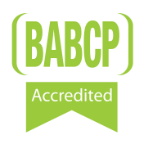Application Of Padesky’s ‘Assertive Defense Of The Self’ Method Used In Social Anxiety To Young Children And Teenagers Being Bullied
What is anxiety?
Anxiety can generally be conceptualised by the diagram below; clients overestimate the danger and the likelihood that something bad will happen and they underestimate how well they will cope with feared situations:
ANXIETY =
OVERESTIMATION OF DANGER (POTENCY + LIKELIHOOD)
+
UNDERESTIMATION OF ABILITY TO COPE OR LIKELIHOOD OF GETTING HELP FROM OTHERS.
What is Social Anxiety?
Social anxiety, is a common anxiety disorder and it is defined in DSM-IV as a ‘marked and persistent fear of social situations in which embarrassment may occur’. The threat is that they will make a fool of themselves and be rejected by others and they underestimate how well they would cope if they did make a ‘social mistake’ or received negative feedback and the likelihood of getting support from others.
How is Social Anxiety treated?
Most Cognitive Behavioural Therapy (CBT), social anxiety programs however seem to focus on the first part of the anxiety equation; helping clients to see that they were overestimating danger as negative beliefs such as ‘I’ll make a fool of myself’, ‘run out of things to say’ are challenged. Exposure to social situations helps to an extent but does it help the client with the second part of the equation to cope with their fear of being criticised and rejected if nothing and happens? If a client is only ever exposed to benign social situations where they are not openly criticised do they leave with the thought-‘I wasn’t criticised there, but I might be the next time and if that happens I’d never be able to cope with that’.
After reading Christine Padesky’s paper ‘A More Effective Treatment Focus For Social Phobia’ (1997), it made me realise that quite often CBT therapists can miss out the second part of the anxiety equation-the coping and in order for socially anxious clients to improve I believe they must learn how to cope with criticism.
Over the last few years, after reading Padesky’s paper I have changed how I treat social anxiety and as well as focusing on thought challenging, exposure to social situations, attentional training, belly breathing, I always now include ‘the assertive defense of the self’ training to enhance the clients’ ability to cope and I believe this has improved treatment outcomes.
What is the ‘assertive defense of the self’ approach and how can it help Social Anxiety?
In order to help a client, increase their confidence and ability to cope it is important to list the clients’ thoughts and assumptions about specifically what they fear people will think or say and then the therapist helps the client write an assertive response for each fear. Padesky calls this list the the ‘assertive defense of the self’.
For example, a person who blushed often may worry that someone may see them as ‘weak or inferior’, an assertive response to this could be- ‘blushing is part of my social anxiety and I blush when I am anxious, it’s not a weakness, lots of people blush and social anxiety is very common’. Being open and assertive about your insecurities gives the person strength and helps them to feel prepared if ever they were challenged directly about their fears.
What we can do as therapists is help the client write an assertive response for all of the client’s fears and then the therapist role plays the critical person and the client has the opportunity to defend themselves, using the responses. The role plays are important as the client has an opportunity to tackle fears head and practice skills, as it is not often that people are openly critical in real life situations.
If the client struggles, the role play should be stopped and the client can be coached to change their body language, i.e. make eye contact, speak louder, sit upright and to deliver their response with confidence.
Here is an example of what a therapist-client role play may look like taken directly from Padesky’s paper:
Therapist: ‘You’re shaking is something wrong?’
Client: ‘Not really, I’m anxious, that’s all’.
Therapist: ‘Why are you anxious?’
Client: ‘I get anxious in social situations.’
Therapist: ‘YOU DO? What’s wrong? Are you crazy or something?’
Client: ‘No I’m not crazy. I have social anxiety’.
Therapist: Social anxiety? Sounds crazy to me?
Client: ‘Maybe you aren’t familiar with it. But it’s quite common. It doesn’t mean I’m crazy’.
How the ‘assertive defense of self’ technique can be applied to bullied children:
As I found this approach so useful for socially anxious adults who felt vulnerable I wondered to myself could children who were being bullied and receiving regular criticism benefit from assertive defence of self training. If a child could equip themselves with assertive responses would this help them to fight back to the bully in a constructive way?
When working with children who are being bullied or have low self-esteem I start with some general assertion training. Teaching the child to be specific and clear when they speak, make them aware of their body language and video them if needed to coach them on how to ‘act as if’ they were confident. How the child appears as well as what they say can make a big difference to their self confidence.
We look at workable compromise, if someone won’t agree they can negotiate, learn to meet someone in the middle, i.e. lets agree to disagree. Other effective assertion skills for bullying are self-disclosure, being open about what they are experiencing i.e. ‘I get anxious’, ‘I have a difficulty’, ‘I feel hurt when..’ . The child may also calmly agree with the person and use negative assertion if they agree with the bully and then ask them to elaborate if they do criticise you to expose something as manipulative and hurtful i.e. ‘oh in what ways do you think I’m shy’. I have found if the child is consistently calm and defends themselves the bully’s words dry up and they start to lose power.
Once a child has learned about assertion you can then list all their negative thoughts about social situations and look at what they have been picked on for and work on an ‘assertive defense of self’ response list. This will equip the child with a set of specific and assertive responses which they can practice again and again with a therapist or carer until they feel confident to use them in real life.
To me this is a really powerful approach as often children hit out or use aggressive words when they are bullied which may get them into trouble or they become passive, run away and go quiet; these are all natural fight or flight responses and you can understand why they chose to fight or flee, but quite often these responses don’t help the situation, the child feels powerless and the bullying continues.
I worked with a child recently called James (pseudo name for confidentiality) who was being bullied for having a stutter. It was hard to challenge thoughts about it as his fears had become a reality, so we focused on his ‘assertive defense of self’ responses to help him to cope and to reduce his anxiety about going to school. Here is how he approached situations at school before training; we role played this first to see what it felt like:
Therapist (Bully): ‘James what is with your stutter?’
Client (Victim): ‘leave me alone!’
Therapist: ‘Why do you do that?’
Client: ‘Just go away, I hate you!’
Therapist: ‘You must feel really stupid stuttering all over the place’
Client: Client hits the child and tells them to ‘shut it!’.
We then practiced other possible responses choosing the ones that felt most helpful to James and then went through the following role play using puppets initially:
Therapist (Bully): ‘James what is with your stutter?’
Client (Victim): ‘Ah you’ve noticed, yes I do have a stutter’
Therapist: ‘Why do you do that?’
Client: ‘It’s a speech difficulty, it makes my words feel stuck.’
Therapist: ‘You must feel really stupid stuttering all over the place’
Client: ‘No not really. Its actually quite common in children. Can I ask what it about my stutter that bothers you so much?’
Therapist: ‘Ermm I’m not sure really…..it’s just…erm a bit different’.
Client: ‘How does it feel to pick on someone with a speech difficulty, what’s that like?’
Therapist: ‘Erm, I don’t know really….anyway see you later…’
We practiced doing this for all of his worries until he felt more confident and his therapy homework was to then practice these skills with parents and then at school. His feedback was that it was really nice to see the bullies lose their power and run out of threatening things to say. James felt stronger and less guilty as he was no longer hitting out which was not something he really did not want to do.
Conclusion
In conclusion, I feel that if a child can be helped to develop specific, assertive responses to their anxious thoughts or bully’s comments this could really help a child manage situations where they feel vulnerable and help them to avoid social anxiety and low self-esteem in the future. Children can also be encouraged to speak out about bullying a seek help from teachers too; but I believe if you also have something that you yourself can do this will really help a child to feel empowered and teach them skills that will help them for a lifetime.
Claire Littlejohn,
Cognitive Behavioural Therapist.
Director of Guiding Minds Therapy.
References:
Padesky, C. A. (1997). A More Effective Treatment Focus For Social Phobia. The International Cognitive Therapy Newsletter, 11 (1), p 1-3.
Powell, T. (2009). The Mental Health Handbook: A Cognitive Behavioural Therapy Approach (3rd ed).
Wells, A. (1997). Cognitive Therapy of Anxiety Disorders: A Practice Manual and Conceptual Guide. John Wiley & Sons Ltd: England.
Recent Posts
- Covid-19 Anxiety: A CBT Support Package
- The Problem With BMI and Why a Single Definition of Healthy Weight is Unhelpful. An Important Message for Weight Conscious Teens.
- Application Of Padesky’s ‘Assertive Defense Of The Self’ Method Used In Social Anxiety To Young Children And Teenagers Being Bullied
- The Positivity Jar: A Great Way to Boost a Child’s Self Esteem and Increase Positive Behaviours.
- How to Approach the Topic of Death with Your Young Child.


